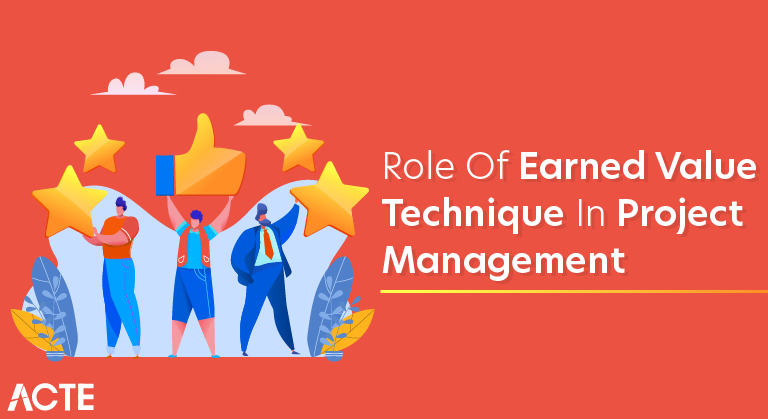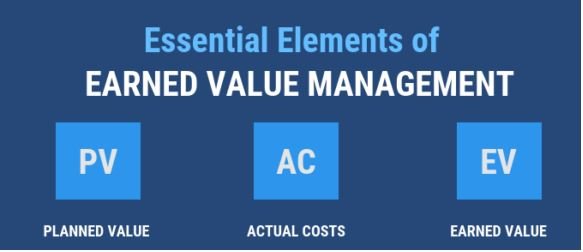
Role of Earned Value Technique in Project Management – Comprehensive Guide
Last updated on 15th Jul 2020, Blog, General
- Earned value management (EVM) is one such technique that, in a single integrated system, can accurately forecast problems so you can better manage project performance.
What Is Earned Value Technique?
- As noted, EVM is a technique that project managers use to track the performance of their project against project baselines.
- Often the progress of a project is thought of simply as being ahead or behind schedule and over or under budget.
- However, what if you’re ahead of schedule, but costs are higher than your planned budget? Or, what if you’re behind schedule, but costs are lower than you first calculated?
- This is where knowing the earned value helps. It can provide deeper information on your project. And when learning about earned value, it’s important to remember that there are three terms associated with it, which are each slightly different.
- Earned Value Analysis (EVA): This project management technique is quantitative. It evaluates project performance by figuring out the likely results of the project. It does this by comparing the progress and budget of work planned to the actual costs.
- Earned Value Management (EVM): This methodology measures project performance with an integrated schedule and budget, which is based on the project work breakdown structure (WBS).
- Earned Value Management System (EVMS): This is the collection of tools, templates, processes and procedures that an organization uses to do EVM.

Calculations For Earned Value Management
There are calculations that can be done quickly and easily to execute EVM. To do so, you need to know the following:
- Planned Value (PV): Budgeted amount through the current reporting period
- Actual Cost (AC): Actual cost to date
- Earned Value (EV): Total project budget multiplied by the percentage the project is complete
Once you have those figures in hand, you can now do a few calculations:
- Schedule Performance Index (SPI): This calculation involves dividing the EV by the PV to measure progress achieved against where you expected to progress at a certain point. If you’ve come up with a value less than 1.0, it means that you’ve done less work than you projected for this point. While a value greater than 1.0 means you’ve completed more than was planned.
- Cost Performance Index (CPI): For this calculation you divide EV by the AC to measure the value of work completed against its actual cost. Again, if you reach a figure less than 1.0, your costs are higher than budgeted. A number higher than 1.0 means the costs are less than budgeted.
- Estimated At Completion (EAC): With this calculation, you divide the total project budget by the CPI value you figured out above.
EVM Is Great, With A Few Caveats
- EVM is a technique that you can use to help manage and control your project, but EVM won’t solve everything.
- Furthermore, as PMI notes, it doesn’t always work on your project. It is not a magic bullet that can pierce all project problems, and it has some pitfalls.
- You can’t rely solely on earned value management. Remember, it’s merely calculating a single objective data point. The earned value on your project can change and can change fast.
- Naturally, cost and progress are seldom reflected in the actual project as they are when you’re executing the project. So, EVM acts as a safeguard and provides useful data. It’s best to make these calculations monthly or more frequently if your project is shorter in duration.
EVM Doesn’t Ensure Quality
- There are some things that EVM doesn’t offer a window to view, such as customer satisfaction and quality of the project.
- The project performance as it relates to important factors such as schedule and budget are tracked with EVM.
- But a successful project is not one merely brought in on time and within budget.
- If your customer is unhappy or the project or service quality is poor, there’s a big problem, regardless of meeting schedule and budget demands.
Without Accurate Data, EVM Is Useless
- Also, if you don’t include all actual costs in your calculations then your results are not going to accurately reflect the progress or performance of the project.
- If you’re using a software that automatically makes these calculations you need to be doubly cautious, as they might overlook some critical data and give you a misleading result.
EVM Needs Context
- Finally, don’t just deliver the numbers to customers, stakeholders or whomever you’re reporting to.
- They need to know what those numbers mean and how you’re using them.
- Be clear in your language and avoid the jargon that we all start using without thinking.
- You know what you’re talking about, but it’s important that who you’re talking to understands as well.
- Don’t dumb it down, of course; just speak clearly and simply.
- Being able to effectively communicate EVM is as important as being able to calculate it.